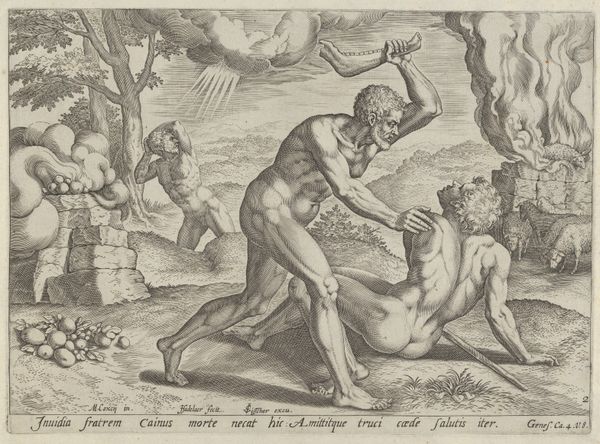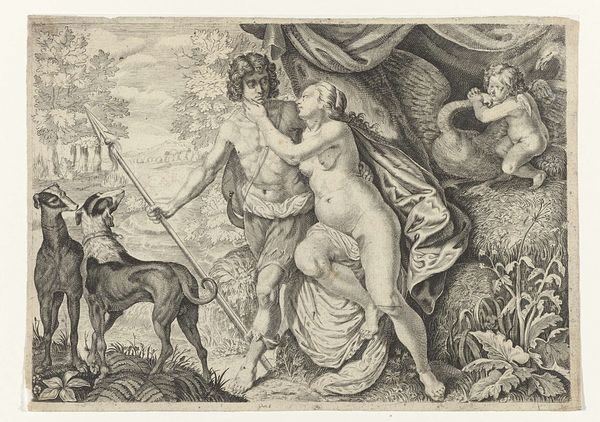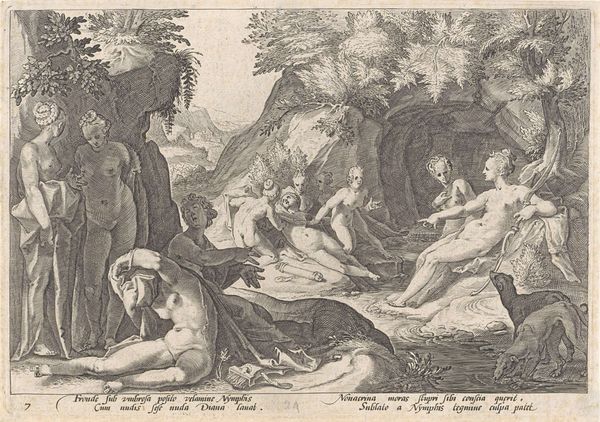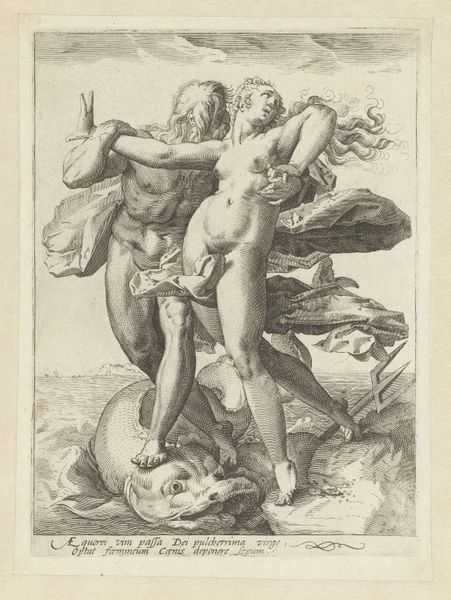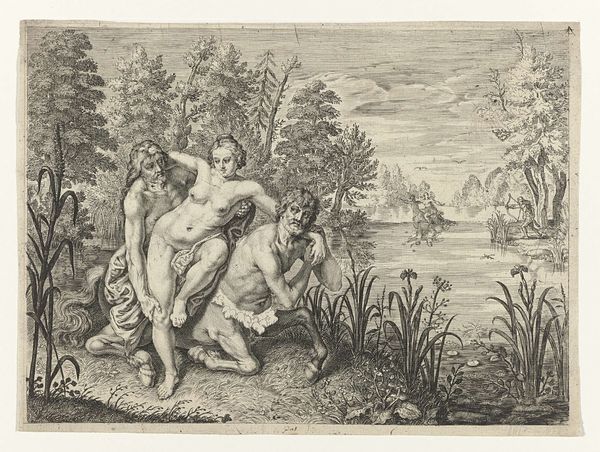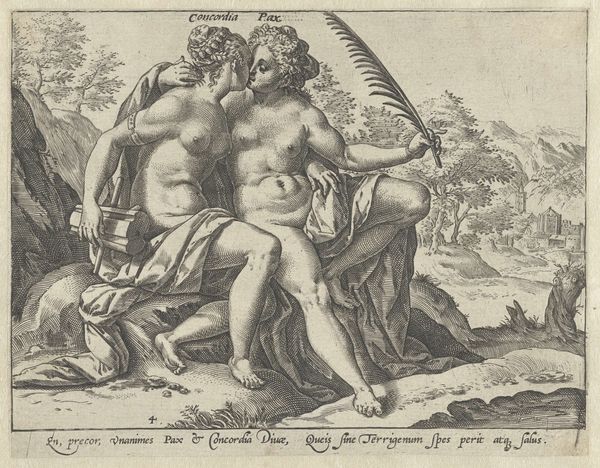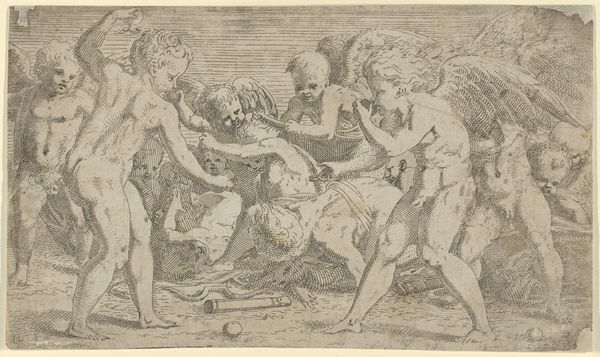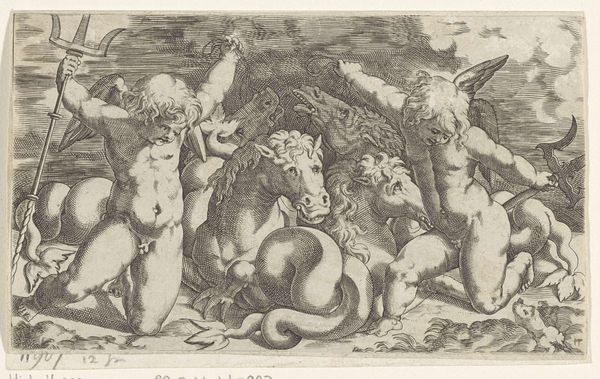
engraving
#
baroque
#
figuration
#
mythology
#
history-painting
#
nude
#
engraving
Dimensions: height 165 mm, width 226 mm
Copyright: Rijks Museum: Open Domain
Crispijn van de Passe the Younger created this engraving, "Coronis en Neptunus," dating back to the 17th century, using lines etched into a metal plate to construct a dramatic scene. The composition immediately grabs us with its stark contrast: the rough, cavernous darkness on the left against the vast, open seascape on the right. The artist masterfully uses line to define form and space. Look how the dense, close-knit lines create the solid, shadowy form of the cave, contrasting with the more sparse, directional lines that suggest the open sky and turbulent sea. Neptune strides forward, his muscular physique meticulously detailed with fine lines, asserting his power. Coronis, in stark contrast, appears to flee, her form delineated with softer, more delicate lines, emphasizing her vulnerability. The diagonal composition, from the lower left to the upper right, adds a dynamic tension, drawing the eye through the narrative. The landscape elements—shells in the foreground, sea creatures and ships in the distance—serve not just as background but as symbolic elements grounding the mythological narrative in a tangible world. Consider how these structural elements work together, challenging conventional notions of space and power, inviting us to decode the complex relationship between form and meaning in Van de Passe's work.
Comments
No comments
Be the first to comment and join the conversation on the ultimate creative platform.



